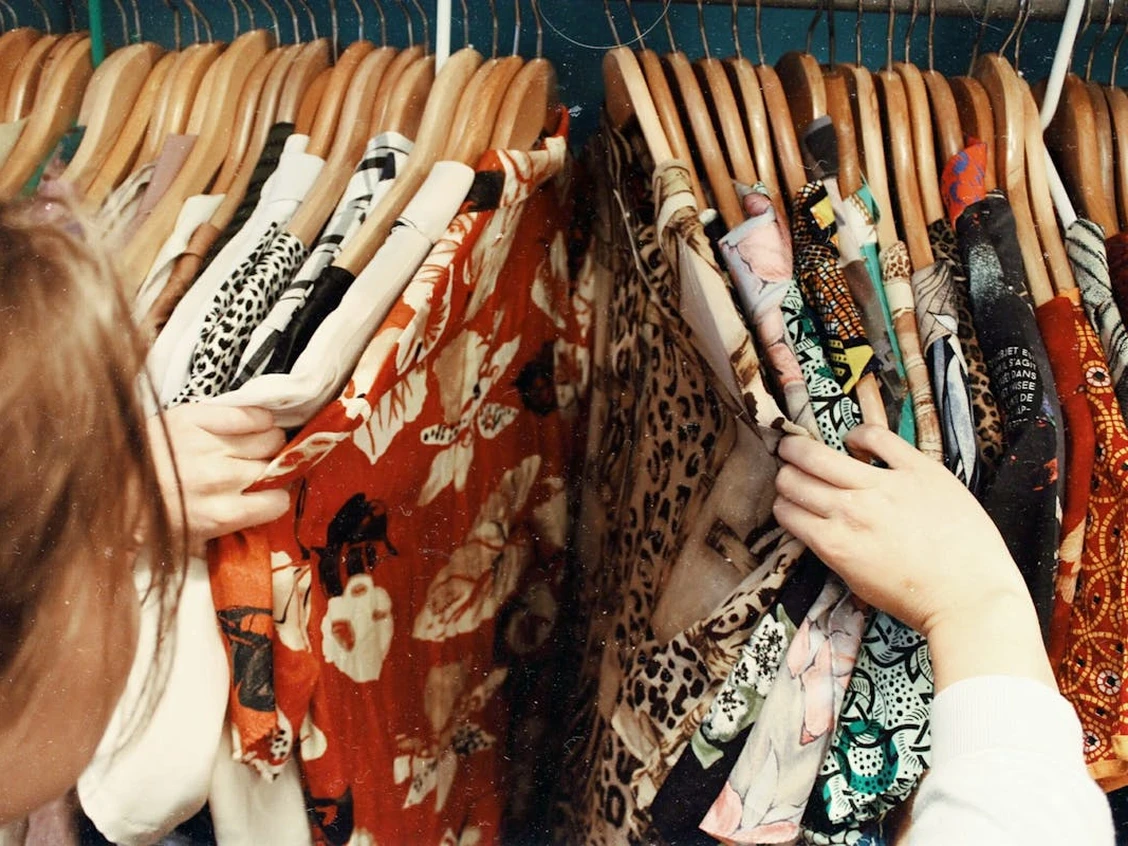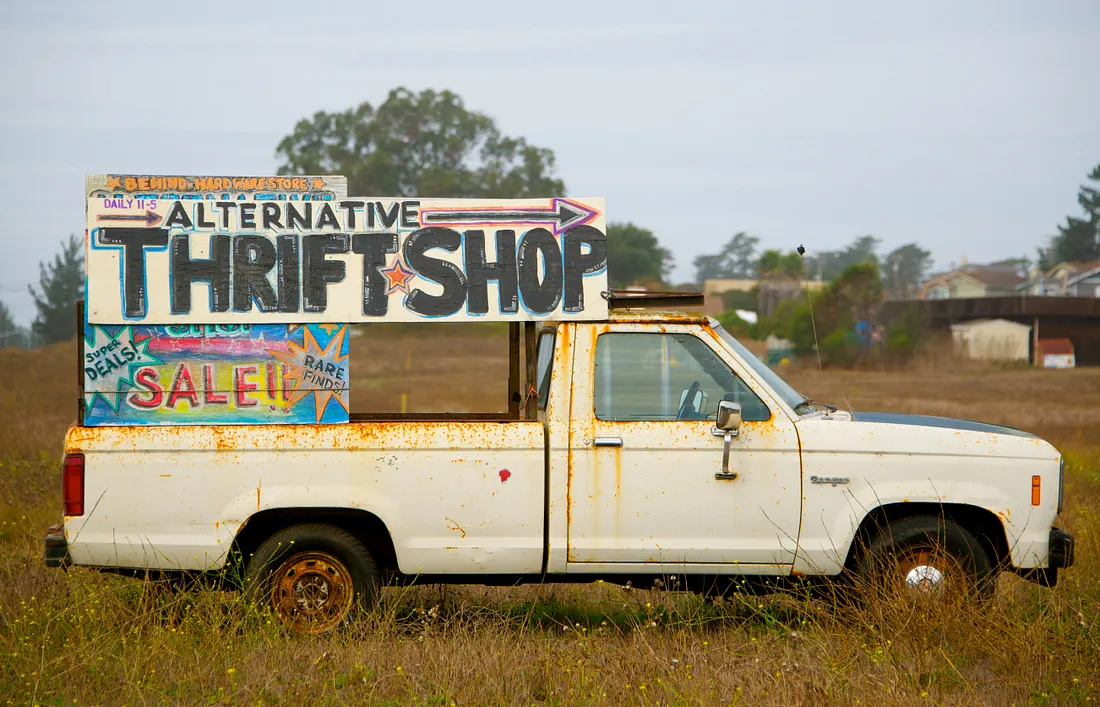By Afroditi A. Karagianni,
Nowadays, more and more people are gradually being made aware of the huge environmental impact the fashion industry has on the planet.
To give you a little insight, the fashion industry is responsible for approximately 10% of global carbon emissions, which makes it a major contributor to climate change. Furthermore, 60% of the clothing purchased ends up in landfills within a year of being bought, leading to the summation of huge amounts of waste globally. In addition, it is estimated that textiles such as microfibers—commonly found in various types of clothing—are responsible for about 35% of micro-plastics found in oceans.
The list, as we all know, could go on and on. In truth, the impact of the fashion world on our planet’s—and by association on ours—health is detrimental. In other words, the unethical clothing companies and the consumers that support them (and/or consume products and create waste without pondering on their choices) have their own part to play in the creation of waste, emissions and pollution that are wreaking havoc on the planet.
Thankfully, amongst the multiple not-so-cautious companies and consumers, there are others who care about their environmental impact and make considerable efforts to reduce it. As far as fashion-related impact is concerned, in recent years, a growing number of people—with many amongst them belonging in the millennial and gen Z population pools—are utilizing an array of alternate methods to achieve this very goal and have been doing brilliantly so far. Which are these methods exactly, and why are they so important?

- Buying Secondhand and Vintage
In our time, shopping in thrift or vintage shops has become the norm for various people. Either in real time (in vintage stores and thrift stores) or virtually (through virtual platforms like Depop, Poshmark, or Vinted) thrifting has proved to be entirely invaluable. More specifically, people buying secondhand clothes have done wonders for the reduction of waste thrown in landfills, since clothes that one thinks about getting rid of can be now gifted with a second life. This goes hand in hand with the reduction in the demand for new clothing production. The longer (old) clothes are used by people, the less need there is for the constant creation of new ones, and this is absolutely brilliant in its simplicity.
- Practicing Slow Fashion
Slow fashion, or else, thoughtful fashion has also met a dramatic increase. Today, many people seem to be putting more thought into their clothing choices, as they go for quality over quantity by investing in timeless, durable and ethically made pieces produced by transparent companies. Of course, this is a practice possibly more expensive (since clothes made from higher-quality fabrics typically cost more), but those that have the funds available seem to be actively choosing to add pieces that are eco-friendly, fashionable and that can be worn for many years to come in their wardrobes.
- Utilizing DIY and Upcycling
DIY and Upcycling are also some creative practices, mainly utilized by the younger generations. More analytically, customizing, repairing or modifying clothes (like cutting a dress in a two-piece skirt and top set or cutting off the sleeves of an old top to make a new one) instead of discarding them are all a huge help to this global effort for the reduction of fashion’s environmental impact. Clothes are reused and not thrown away, the consumption of new ones decreases, and waste concerning old fabrics, buttons and fashion related items are minimized altogether.
- Embracing Capsule Wardrobes
Another trend that has been gradually gaining pace is capsule wardrobes. Those are wardrobes (or selections of one’s clothing in general) that are “minimal” (and thus visibly short) in the number of items they contain. These selections are filled with versatile, mix-and-match items, which can be styled in various ways by their owner. For example, a single top from these types of bundles can be worn in many ways, as it matches with the majority of the wardrobe’s other items. As such, this practice reduces overconsumption and simplifies purchasing decisions, all the while helping the person concerned become more skilled and creative in the process of creating their outfits.
- Expecting Sustainability from Brands
People have also begun demanding sustainability and ethical production from brands, through actively supporting businesses that use eco-friendly materials (like organic cotton or recycled polyester). At the same time, many advocate for transparency in supply chains through social media activism and practice conscious consumerism, while openly condemning the practices of companies that they deem harmful to the environment and generally unethical. In many cases, such initiatives from people have led to the boycotting of various very high-standing companies, who have later gone on to apologize for their careless (clothing creation) practices and have since taken significant steps for their environmental footprint’s reduction.

- Reducing Fast Fashion Consumption
To follow up on that, to this day, many are still actively boycotting fast fashion giants like Shein or H&M, or are significantly reducing purchases from them in order to be more environmentally sensitive consumers. Consequently, they turn their attention to abovementioned practices like thrifting and manage to largely protect our planet’s health. Certainly, fast fashion brands typically create cheap clothes, which may appear appealing to many. However, as our consumption choices grow, more and more people would much rather familiarize themselves with Vinted or thrift stores, in an effort to scout clothes that are both cheap and a wiser consumption choice.
- Spreading Awareness
Finally, through the usage of platforms like TikTok, Instagram, and YouTube, many strive to educate others on sustainable fashion practices and greenwashing, which is an integral part of the familiarization of the people with these methods and the fashion industry’s problematic entanglements.
Honestly, I do not think that there is such a thing as a perfect consumer (and if there are some of the like, they are indeed a confined minority). That being said, I find that it is an absolute necessity for all of us to become more environmentally cautious when it comes to our fashion choices and incorporate greener (fashion-related) practices that suit our lifestyle in our day-to-day lives. As a result, we will be actively benefiting our planet, making our lives more sustainable and our wardrobes more green and intriguing.
Reference
- 35% of microplastics in oceans come from clothing, research reveals. Environmentjournal.online. Available here




